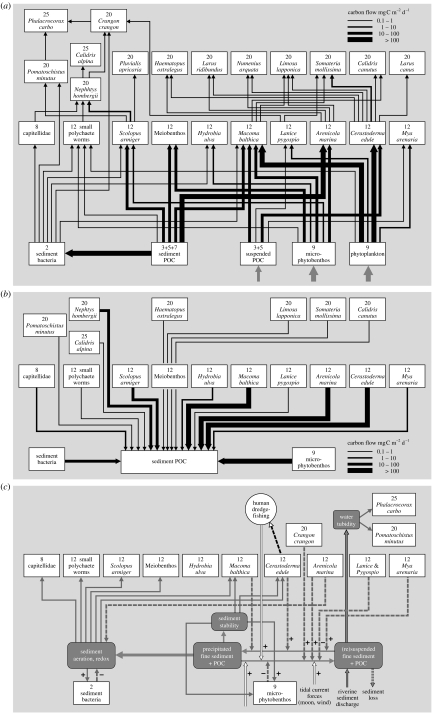Figure 4.
The general framework for studying ecological networks (figures 1 and 2), as applied to the soft-bottom intertidal mudflat ecosystem of the Wadden Sea (Sylt-Rømø part, Denmark). This ecosystem consists of several subwebs. The interactions for the ‘Arenicola flats’ subweb are presented here. (a) The interaction web based on consumer–resource interactions (food web), where the topology of the web and the weight of the interactions (presented here as carbon flow, in mgC m2 d−1) is based on measured fluxes as presented by Baird et al. (2007). (b) The interaction web for the same ecosystem drawn for the detritus production part of consumer–resource interactions, based on measured fluxes as presented by Baird et al. (2007). (c) The inferred interaction web for the same ecosystem for other than consumer–resource interactions, drawn for important effects of species on abiotic conditions (ecosystem engineering), response of species to abiotic conditions, external forcing, material inputs and losses, and various physical and chemical interactions, based on information from various sources (Whitlatch 1981; Flach 1992; Herman et al. 1999; Widdows et al. 2004; Coco et al. 2006; Huxham et al. 2006; Lumborg et al. 2006). The key interaction in this web is the effect of organisms on physical conditions. Specifically, the web outlines the influence of organisms on the sedimentation rate of fine sediment versus its resuspension, where some biota promote the sedimentation, while others promote or inhibits its resuspension. Interaction weights were not available for the interaction web shown in (c). Numbers inside each box indicate the trophic functional group (figure 2). See figure 1 for the interpretation of the different types of arrow.

